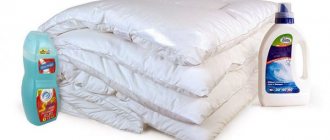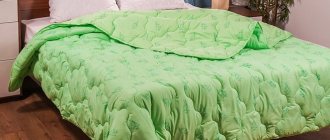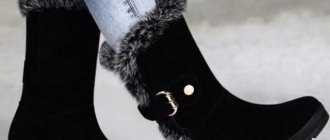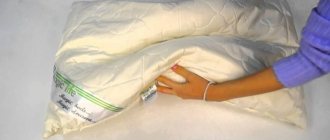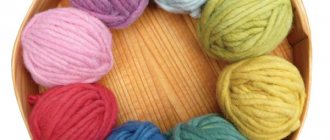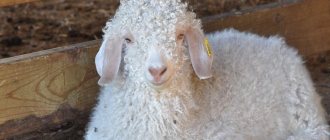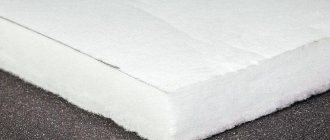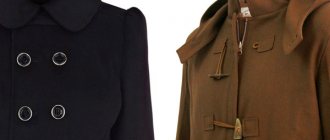How to get camel hair
Down is obtained by combing, with the best quality being material obtained from young non-working animals. You can pick it up once every five years.
Next, the wool obtained from combing is processed on an industrial scale:
- Immediately after receiving the material, it is subjected to cleaning and pre-sorting. Both processes are carried out by hand, after which the wool is sent to the mill for production.
- The fluff is placed in special detergents, and the entire volume is washed at least five times.
- Using special machines, the natural material is squeezed out and sent to a special drying shop. There the raw materials remain for two days at a temperature of 80-90 °C.
- The fibers, cleaned and dried, then enter the spinning shop. Subsequent processing steps will include scuffing, loosening, carding and mixing, depending on the intended end product.
The result of a long process of processing raw materials is a thin and almost weightless yarn.
Camel wool is also processed manually, while the factory yarn looks more uniform and dense, without protruding fluff. “Hand-made” products are more expensive because they require more time and effort for processing than in industrial production put on stream.
We recommend reading: What is L-carnitine used for, instructions for use, side effects
Advantages and disadvantages of wool
Camel wool has been used since ancient times to create blankets, clothing, and home textiles. The popularity of the material can be easily explained by its advantages:
- good thermal insulation;
- strength and noticeable lightness;
- hypoallergenic;
- no accumulation of electrical charges;
- high adsorption, does not allow moisture to penetrate into the fibers;
- has a positive effect on the skin and receptors.
Attention! It is believed that animal fluff can relieve inflammation and irritation and provide skin massage.
Among the disadvantages of camel wool, one can only name the high cost of products made from this material. This leads to the frequent sale of counterfeits and textiles that additionally contain synthetics.
Camel wool clothing: benefits and healing qualities
The list called the beneficial properties of camel wool is a rather impressive list of various qualities. Camel down is several times lighter and much stronger than sheep's. The hairs of the “ships of the desert” wool are hollow inside. Thanks to this design, they provide additional thermal insulation. Currently, many manufacturers create clothes from camel down for such professions as astronauts and sailors, who have fully appreciated why it is useful to wear clothes made from camel hair.
However, ordinary consumers can also purchase such products. Such products can perfectly disable toxic substances produced by the human body and have a cosmetological effect on the skin (increase the smoothness and elasticity of the skin). The advantages and benefits of camel wool are simply invaluable.
What are the benefits of camel hair?
Camel wool and down are valued not only for ease of processing and technical characteristics. The material helps in the treatment of many diseases, including radiculitis, rheumatism and arthritis. Since the raw material is capable of generating dry heat, products made from it are ideal for people suffering from excessive sweating.
The healing properties of a camel hair belt for the lower back
A camel wool belt is a great help in the fight against lower back pain. The product is very soft, does not cause discomfort and does not cause irritation.
A belt made of natural material has the following properties:
- It warms perfectly and gives the effect of a dry compress.
- Relaxes the back muscles, stimulates blood flow to the lower back. Helps relieve pain.
- Frees the skin from toxins, lanolin in the fluff has a beneficial effect on the circulatory system.
The belt provides a massage movement due to a slight tingling of the villi
Health benefits of camel wool socks
Socks made from natural material are the second most popular option for products made from camel down. They have the following beneficial effects:
- prevent the growth of bacteria, preventing the appearance of an unpleasant odor;
- remove excess moisture, leaving your feet dry;
- thanks to lanolin, they accelerate the healing of wounds and abrasions, smooth out the skin of the foot;
- relieve heaviness in the legs after a working day, eliminate signs of arthritis and arthrosis;
- The products are hypoallergenic and do not cause irritation.
Socks made from animal wool are antistatic, can retain heat for a long time, and are recommended for wearing by small children
The healing properties of camel hair knee pads
Another popular product is knee pads made of camel hair, the benefits or harms of which have long been scientifically proven. Unlike other similar accessories, they are distinguished by good density and heat conductivity.
We recommend reading: Food additive E500: dangerous or not, what is it made from
Main indications for wearing products:
- protection against hypothermia is required;
- increased load on joint joints;
- prevention and treatment of arthritis, arthrosis and rheumatism;
- work in conditions of high humidity;
- impaired blood circulation;
- injury prevention for athletes.
Knee pads made from camel down are much more comfortable to wear than their counterparts made from other types of wool.
Attention! The natural raw materials contain a set of biologically active components that promote a speedy recovery.
Useful properties of camel wool blankets
A camel wool blanket is an environmentally friendly type of home textile. It is environmentally friendly, perfectly absorbs moisture, gives healthy sleep and warms. The blanket has a beneficial effect on the cardiovascular system and respiratory system.
The blanket will be ideal for people who often catch colds
Is the camel lying around? Testing camel hair
After publishing a video on creating eco-fur, we had questions in the comments: is the camel lying around ?
I have never heard that a camel does not roll on its own, so I quite successfully used it as a basis for a collar using the eco-fur technique, and did not notice any difficulties in using the wool of this animal.
But after the hypothesis that camel wool does not fall on its own, I wanted to test it again and make a sample only from camel, without adding alpaca and merino.
So, we tested camel wool, 18 microns, tops, without impurities (pure camel), produced by DHG Italy.
What nuances did I notice:
1. Initial adhesion occurs faster than merino.
2. Transformation into a finished canvas takes a little longer. But not critical.
3. The crimp in the fabric is wider than that of merino. What I mean will be described in more detail below.
4. After matting, it becomes a little rougher to the touch than in its original form.
5. The structure of the fabric is looser. Now I will try to describe my thoughts. When a conventionally straight fiber begins to transform into a wavy fiber when felted, the amplitude of the wave and the step of the new wave in merino are more frequent than in camels. Due to this, camel wool fabric has more voids than merino fabric. Perhaps this is why one gets the feeling that the camel is not felted. And perhaps this is why when adding merino to a camel, the fabric looks more uniform and sunken. In the video, when viewed against the light, it is clearly visible that inside the canvas has evenly “shrinked” and the fibers have “become friends.” When checking tactilely (rubbing between fingers), there is no feeling that the canvas is not sunken. These are my feelings; I couldn’t find any photos or pictures of the structure of camel wool fiber on the Internet.
6. All these conclusions apply only to the camel of a given manufacturer and to a given fineness. Perhaps wool from other manufacturers behaves differently, perhaps there is a lot of guard hair in carded wool, rather than downy undercoat, and therefore it is very difficult to felt. If I get my hands on a camel from another manufacturer, I will definitely try it; now it makes no sense to assume what might happen with a different wool.
7. Camel gives a very interesting texture. Practically does not mix with the main wool if added as decoration. Merino “doesn’t eat it.” This feature can be very interestingly used in your ideas. You can felt double-sided products without preliminary preparation - the colors will not mix.
The next task before me is this. Make something for everyday wear from pure camel and see how durable it is.
Dear masters, share your experience of working with a camel in the comments. How do you use it and what difficulties have you encountered?
I used it like:
— basis for the collar (eco fur);
- a thermal layer in the coat (camel is warmer than merino);
- surface decoration.
I will be very glad to hear about your experience!
Environmental safety of camel wool
- The most valuable material for blankets is the wool of non-working Mongolian Bactrian camels - Bactrians.
- Wool and down from camels are collected once a year, as a result of molting, up to 10 kg of material from an adult individual.
- No caustic or toxic chemicals are used during the harvesting and processing of camel hair. It is rarely painted. And when dyeing, most manufacturers prefer to use natural dyes.
Thus, camel wool is environmentally friendly. This has increased its popularity among those who adhere to conscious consumption and monitor their health.
WHY SHOULD YOU WEAR CAMEL HAIR SOCKS ALL YEAR ROUND?
Reason 1
— These socks have the ability to wick away excess moisture, so your feet remain dry. And all because camel wool is very hygroscopic, plus, thanks to the structure of its hairs, it conducts air well... a la the ventilation effect.
Reason 2
— These socks prevent the growth of bacteria and fungi, and therefore the occurrence of unpleasant foot odor.
Reason 3
— These socks ease fatigue after a hard day, relieve symptoms of rheumatism and arthritis, reduce inflammation and normalize blood circulation due to light massage with the fibers of the material.
Reason 4
— These socks, thanks to lanolin, which is part of camel hair, accelerate the healing of wounds and abrasions, the skin of the foot becomes smooth and soft. You can show off baby heels when you put on your sandals.
Reason 5
— These socks are the best gift. They are ideal as a gift for lovers of fishing, hunting and mountain hiking. They will warm the people you love on cool nights in camping tents, saving you from early sciatica, which is inevitable in this case. Also, those who have to spend a lot of time outdoors in work shoes - military, police, security guards and construction workers - will be especially grateful to you for such a gift, since these socks prevent fungal diseases of the feet.
Reason 6
— These socks will be a great help for mothers who spend a long time walking with their children outside, as they keep their children’s feet warm for a long time.
Reason 7
— These socks are hypoallergenic. The unique property of camel wool is that it does not cause allergies like other types of wool, which is especially important given the growing number of patients with allergies and related diseases. Camel down does not irritate at all, but on the contrary, soothes irritated skin.
Reason 8
— These socks are antistatic, i.e. neutral towards static electricity. This property of camel wool is an excellent protection against technological aggression coming from all electrical appliances in the house. In the east they also claim that camel hair protects against social aggression and environmental negativity (accelerates the absorption of energy holes).
Reason 9
— These socks are products of Mongolian factories, they are made with circular knitting (this is how sports socks are usually made), the foot is additionally padded, and maximum fit is ensured in the instep. They fit perfectly on the foot, do not slip, do not twist or rub.
Reason 10
– These natural wool socks are beautiful, durable and comfortable.
